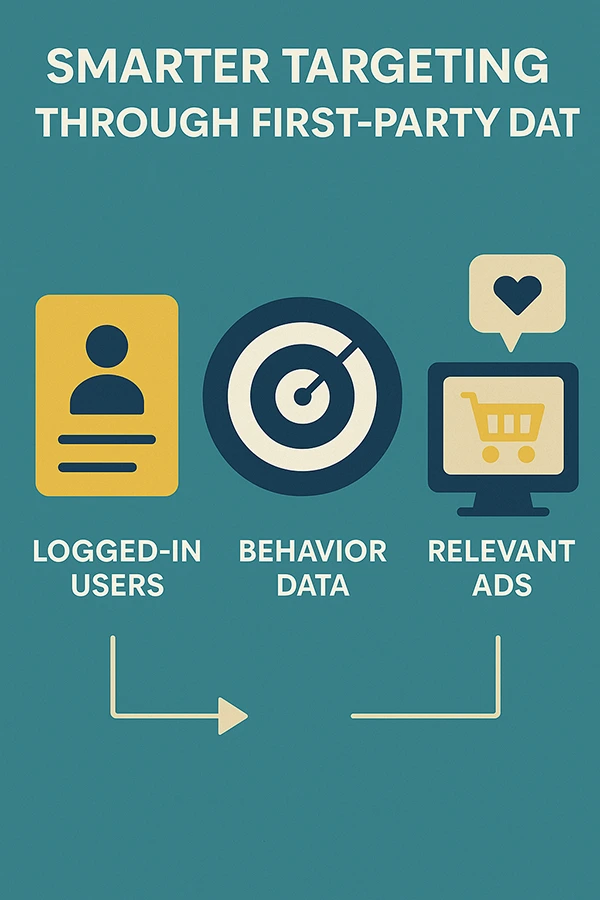KEY TAKEAWAYS
- CTV users to exceed 1.1 billion globally by 2025.
- Advertisers benefit from smarter targeting using first-party streaming data.
- Programmatic ads now offer real-time optimization and premium inventory.
- Shoppable and interactive TV ads enhance viewer engagement and sales.
- Custom CTV creatives outperform repurposed linear TV commercials significantly.
Statista recently posted a report that said global Connected TV (CTV) ad spend will reach $38 billion by 2027, suggesting tremendous progress in how audiences access content and in changing the way consumers expect to access content.
In an evolving landscape, we started to consider what’s next for Connected TV. From personalized to smarter personalization to interactive ads, to AI and immersive components, CTV is being developed to go far beyond its original use case.
In this article, we will analyze the emerging trends and technologies that will shape the CTV landscape into 2025 and 2026, and how they will place expectations on businesses and audiences moving forward.
Connected TV (CTV) has become a go-to channel for advertisers looking to reach audiences in a fragmented media landscape. With millions of households streaming on smart TVs, consoles, and devices, CTV is clearly showing its worth beyond being a traditional TV alternative.
One of the most significant advantages of CTV campaigns is their tendency to combine the reach of linear TV with the precision of digital advertisement—something advertising executives are finding hard to ignore. Here are more:

The first trend on this list is how digital platforms will become new ways for driving growth. The possibilities offered by streaming are just overwhelming, in a good way. Using platforms like YouTube on CTV, brands match linear TV’s reach while gaining added advantages such as interactivity, targeting, and flexibility.
These include personalizing ads at scale, using video ad sequencing to tell impactful stories, and driving action with interactive features. Video viewing habits have evolved—and so has how brands connect with audiences. Fascinating shift in both behavior and engagement strategy.
With third-party cookies disappearing, first-party data becomes essential for digital platforms, and Connected TV is no different in this shift. More platforms are now allowing advertisers to tap into logged-in user data from streaming services, giving brands better insights into household demographics, viewing habits, and even purchase intent.
The result? More relevant ad experiences and less wasted spend. Smart targeting on CTV means ads can now be served based on behaviors like past purchases or content preferences. A major departure from the wide, generalized audience groups used in traditional television. Below you can see how advertisers uses first-party data.

At its core, television remains a communal experience. For more than twenty years, network TV sellers have highlighted the “watercooler effect”—how audiences discuss standout content after watching together.
Connected TV (CTV) enhances this dynamic, offering personalized viewing while fostering shared experiences with friends and family. While viewers first moved to streaming for freedom and control, many now revisit big screens to enjoy shared social experiences again.
In Japan, over half of YouTube TV viewers watch with others; in Vietnam, more than 90% co-view, with many agreeing it strengthens relationships. In Australia, 72% of people who co-view have built consistent CTV watching habits together.
Programmatic CTV has matured; early versions often lacked quality inventory and offered minimal transparency for advertisers and brands. Today, advancements in technology and stronger partnerships between DSPs (Demand Side Platforms) and premium publishers have changed that.
Now, advertisers access premium inventory instantly, tweak creatives in real time, and make on-the-go optimizations for better results. This is pushing CTV closer to the real-time performance marketing model marketers are used to on social and display channels—except now they’re doing it on a big screen in someone’s living room.
Amidst the increasing demand for online shopping via platforms like Amazon in the Americas and Lazada in Asia, this is interesting as well. A major innovation is the move away from passive watching toward active, interactive viewer participation.
Shoppable TV ads now let viewers scan or click to purchase items straight from their screens—and they’re growing in popularity. Retail brands in particular are testing formats that blend video storytelling with eCommerce features, reducing the distance between inspiration and conversion.
QR codes, voice-enabled interactions, and remote-controlled features are being explored to make these formats more seamless. Marketers must strike a balance between interactivity and disruption, encouraging engagement without negatively affecting the viewer’s overall experience.
Not all video content performs equally well on CTV. Many brands make the mistake of repurposing 15- or 30-second linear TV spots without adapting them for a streaming-first context. CTV audiences behave differently; they might skip content, exit quickly, or dive in with deeper engagement than traditional TV allows.
The most effective creatives tend to be more personalized, visually engaging, and tailored to the platform they’re on. More brands are now creating tailored ad variations that suit viewer behavior and platform context, especially on services like Hulu, Roku, and Freevee.
DO YOU KNOW?
By 2029, the global TV watchers is expected to exceed 5.5 billion users!
As targeting and interactivity become more sophisticated, so to do the privacy and compliance demands on CTV campaigns. Laws such as GDPR and CCPA require marketers to carefully handle how they gather, use, and distribute consumer data.
As programmatic CTV purchases rise, worries about brand safety are also becoming more prominent among advertisers. Advertisers are demanding more transparency into where their ads appear and working with partners who can provide better controls, content filters, and real-time reporting.
“Someone on TV has only to say, ‘Alexa,’ and she lights up. She’s always ready for action, the perfect woman, never says, ‘Not tonight, dear.’” — Sybil Sage, The New York Times
CTV has moved beyond being an “emerging channel”—it’s now a vital element in the omnichannel marketing strategy. But the pace of innovation isn’t slowing down. As new formats, platforms, and technologies take hold, marketers who stay curious, test aggressively, and adapt quickly will be the ones who see the most significant gains.
Be it leveraging advanced data, testing interactive formats, or enhancing performance tracking and measurement efforts. The CTV of tomorrow will reward the marketers who understand that the medium isn’t just changing—it’s evolving into something entirely new.
CTV combines digital targeting precision with the mass reach of traditional television, permitting advertisers to serve relevant and engaging advertisements for extremely specific audience segments.
As third-party cookies are on a decline, CTV is using first-party data to provide smarter targeting of audiences based on their behaviors, preferences, and demographics.
Shoppable TV ads allow consumers to purchase items directly on the screen when they see them, which reduces the distance a consumer has to travel in their customer journey toward a purchase.
